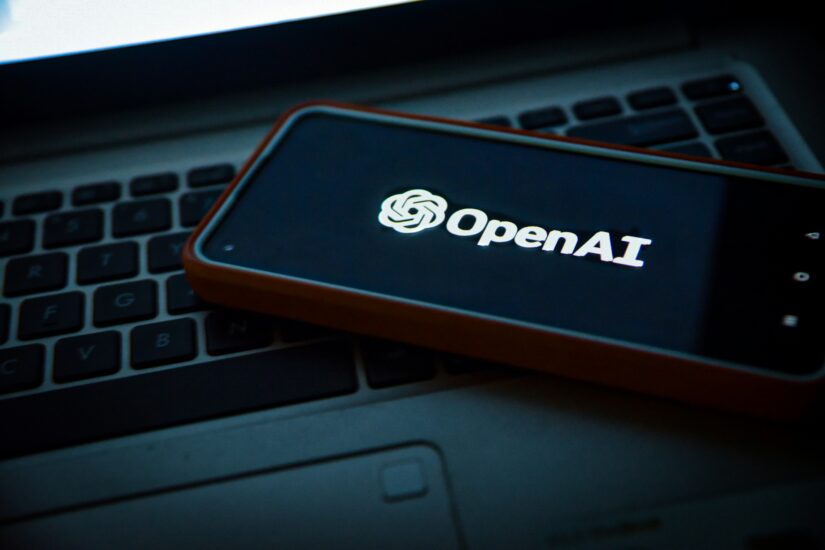Unleashing AIs Potential: How ChatGPT is Changing the Way We Communicate

Unleashing AIs Potential: How ChatGPT is Changing the Way We Communicate
Artificial Intelligence (AI) has rapidly advanced in recent years, revolutionizing various industries and reshaping the way we live and work. One significant development in AI is the emergence of powerful language models like ChatGPT. ChatGPT, developed by OpenAI, has garnered immense attention due to its ability to engage in human-like conversations. This article delves into the transformative potential of ChatGPT in changing the way we communicate.
We will explore the capabilities and limitations of AI language models, examine how ChatGPT is revolutionizing conversational AI tools, highlight the benefits of using ChatGPT for personalized interactions, address ethical concerns and biases, explore real-world applications across industries, and speculate on the future implications of this technology. Join us as we unravel the impact of ChatGPT and its role in shaping the future of communication.
1. Introduction: The rise of ChatGPT and its impact on communication
1.1 The emergence of AI language models
In recent years, the field of artificial intelligence has witnessed a remarkable breakthrough in the development of AI language models. These models are trained on vast amounts of text data and can generate coherent and contextually relevant responses to user inputs. With their ability to understand and generate human-like language, AI language models have revolutionized the way we interact with technology.
1.2 Introduction to ChatGPT
One of the most popular and widely used AI language models is ChatGPT. Developed by OpenAI, ChatGPT takes the concept of AI-driven conversation to a whole new level. It is designed to engage in dynamic and interactive exchanges, making it feel as though you’re conversing with a real person. With its intuitive and user-friendly interface, ChatGPT is changing the way we communicate.
2. Understanding ChatGPT: Exploring the capabilities and limitations of AI language models
2.1 How AI language models work
AI language models like ChatGPT rely on a technique called deep learning, where neural networks are trained on large datasets to learn patterns and generate responses. They analyze the input text, process it through multiple layers of interconnected nodes, and generate a relevant output based on the learned patterns.
2.2 Unveiling the capabilities of ChatGPT
ChatGPT showcases impressive capabilities in understanding context, providing detailed responses, and even offering suggestions to incomplete queries. It excels at a wide range of tasks, such as answering questions, providing explanations, and engaging in casual conversation. ChatGPT’s ability to adapt its responses to various prompts makes it a versatile tool for communication.
2.3 Limitations and challenges of AI language models
While AI language models like ChatGPT have made significant advancements, they still face limitations. They may sometimes generate incorrect or nonsensical responses, especially when faced with ambiguous queries. Additionally, these models can sometimes exhibit biases present in the training data, highlighting the importance of ongoing research and fine-tuning to mitigate such issues.

3. Revolutionizing Conversational AI: How ChatGPT is transforming communication tools
3.1 The role of ChatGPT in conversational AI
ChatGPT plays a crucial role in advancing conversational AI. By providing a more natural and interactive way to communicate with machines, it bridges the gap between human and machine interaction. The seamless integration of ChatGPT into communication tools empowers individuals and businesses to have intelligent conversations, simplifying complex tasks and enhancing user experiences.
3.2 Advantages of ChatGPT over traditional communication tools
Compared to traditional communication tools, ChatGPT offers several advantages. It can understand and respond to a wide range of queries, making it adaptable to different scenarios. With its conversational capabilities, ChatGPT brings a human-like touch to interactions, making communication more engaging and personalized. Its ability to handle multiple user inputs simultaneously also boosts efficiency and productivity.
3.3 Impact on efficiency and productivity
By leveraging the power of ChatGPT, communication tools become more efficient and productive. ChatGPT can assist in tasks that previously required human intervention, saving time and resources. Its quick response times and ability to handle multiple conversations simultaneously streamline workflows and enhance productivity. With ChatGPT at the forefront, communication tools are taking a giant leap forward.
4. Enhancing User Experience: The benefits of using ChatGPT for personalized and engaging interactions
4.1 Personalization and customization in communication
ChatGPT enables personalization and customization in communication like never before. Its ability to understand context and adapt to user preferences allows for tailored interactions. Whether it’s addressing specific needs or offering personalized recommendations, ChatGPT creates a more personalized user experience, leading to higher satisfaction and engagement.
4.2 Creating engaging and natural conversations
Gone are the days of rigid and impersonal conversations with machines. ChatGPT’s conversational prowess brings a sense of naturalness and engagement to interactions. Its ability to generate coherent and contextually relevant responses fosters a more authentic and enjoyable conversation. With ChatGPT, communicating with machines becomes a delightful experience.
4.3 Improving user satisfaction and retention
The integration of ChatGPT into communication tools enhances user satisfaction and retention. Its conversational abilities create a more human-like experience, building rapport and trust with users. ChatGPT ensures that users feel heard and understood by providing accurate and helpful responses. This leads to increased user satisfaction and a higher likelihood of retaining users as loyal customers.
With ChatGPT’s growing influence, the way we communicate is undergoing a significant transformation. Its ability to understand, engage, and personalize interactions is revolutionizing communication tools, making them more efficient, engaging, and user-friendly. As AI language models continue to evolve, the potential for further advancements in communication technology is unparalleled. So, embrace ChatGPT and witness the future of communication unfold before your eyes!
5. Overcoming Challenges: Addressing ethical concerns and mitigating biases in AI communication
5.1 Ethical considerations in AI communication
When it comes to AI communication, there are important ethical considerations to keep in mind. As ChatGPT becomes more advanced, we need to ensure that it is being used responsibly and ethically. This means taking into account issues such as privacy, consent, and potential misuse of the technology. Developers and users alike must establish clear guidelines and ethical boundaries to prevent any harm or abuse.
5.2 Tackling biases and promoting inclusivity
AI systems like ChatGPT can inadvertently learn biases present in the data they are trained on. This poses a challenge when it comes to ensuring fair and unbiased communication. Developers are working hard to minimize these biases and promote inclusivity. Robust training data that encompasses diverse perspectives and continuous monitoring and evaluation are key steps in addressing biases in AI communication. By actively tackling biases, we can strive for a more inclusive and equitable future.
5.3 Ensuring privacy and data security
In an increasingly data-driven world, privacy and data security are pressing concerns. As AI technologies like ChatGPT interact and learn from users, it’s crucial to prioritize the protection of personal information. Efforts are being made to implement secure infrastructure, robust encryption, and strict data handling practices. By establishing strong privacy safeguards, we can ensure that AI communication respects user privacy and keeps sensitive information secure.
6. Real-World Applications: Exploring the diverse use cases and industries benefiting from ChatGPT
6.1 Customer service and support
ChatGPT is revolutionizing the customer service and support industry. With its ability to understand and respond to customer inquiries, it has the potential to streamline and enhance the customer experience. From answering FAQs to providing personalized recommendations, AI-powered chatbots can handle a wide range of customer queries, ensuring faster response times and improved satisfaction.
6.2 Virtual assistants and chatbots
Virtual assistants and chatbots have become indispensable tools in today’s digital landscape. ChatGPT’s natural language processing capabilities make it an ideal candidate for these roles. Whether it’s scheduling appointments, answering questions, or performing simple tasks, AI-powered virtual assistants and chatbots powered by ChatGPT are transforming the way we interact with technology, making our lives more convenient and efficient.
6.3 Education and e-learning
The education sector is also benefiting from ChatGPT. AI-powered chatbots and virtual tutors can provide personalized learning experiences and assist students in their educational journey. From answering queries and explaining concepts to providing study resources, AI can augment traditional teaching methods and make education more accessible and engaging.
6.4 Content generation and writing assistance
ChatGPT’s language generation capabilities have found applications in content creation and writing assistance. Whether it’s generating blog posts, creating marketing copy, or assisting with proofreading, AI-powered writing tools can be a valuable resource for professionals and content creators. ChatGPT’s ability to offer suggestions, correct grammar, and enhance readability can save time and improve the quality of written content.

7. The Future of Communication: Speculating on the potential advancements and implications of ChatGPT
7.1 ChatGPT’s role in the future of communication
As ChatGPT continues to evolve, it is poised to play a significant role in shaping the future of communication. It has the potential to bridge language barriers, facilitate smoother interactions, and enhance accessibility to information. ChatGPT’s ability to understand and respond to human language opens up possibilities for improved human-computer interaction, making communication more seamless, efficient, and natural.
7.2 Potential impact on the job market and human workforce
The increasing capabilities of AI communication tools like ChatGPT have raised concerns about their impact on the job market. While AI may automate certain tasks traditionally performed by humans, it also has the potential to augment human capabilities and create new job opportunities. As AI technology advances, individuals and industries must adapt and acquire new skills to thrive in a changing job market. Collaboration between AI and human workers can lead to more efficient and productive outcomes, ensuring a future where AI and humans coexist harmoniously.
Conclusion
In conclusion, ChatGPT represents a significant milestone in AI, ushering in a new era of communication. With its remarkable capabilities and potential, ChatGPT has already begun transforming various industries and enhancing user experiences. However, it is crucial to navigate the ethical challenges associated with AI communication and ensure the responsible development and deployment of these technologies.
As ChatGPT continues to evolve and improve, we can only imagine the endless possibilities and implications it holds for the future. By embracing this technology and leveraging its power, we have the opportunity to shape a more connected, efficient, and engaging world of communication.
FAQ
1. What is ChatGPT?
ChatGTP utilizes artificial intelligence techniques to generate human-like responses in conversational settings. It has been trained on a vast amount of text data and can engage in interactive conversations with users.
2. How is ChatGPT different from traditional chatbots?
Unlike traditional chatbots that rely on predefined scripts or rule-based systems, ChatGPT leverages deep learning algorithms to generate responses based on context and user input. This allows for more natural and dynamic conversations, as ChatGPT can understand and respond to a wide range of queries and prompts.
3. Can ChatGPT understand and respond accurately to all types of questions?
While ChatGPT is incredibly proficient at generating responses, it does have limitations. It can sometimes produce incorrect or nonsensical answers, and it may struggle with contextually complex or ambiguous queries. OpenAI is continuously working on improving the model’s accuracy and addressing these limitations.
4. What are the ethical considerations for using ChatGPT?
The use of AI language models like ChatGPT raises ethical concerns such as potential biases, misinformation propagation, and the risk of enabling malicious activities. OpenAI and the wider AI community are actively addressing these concerns through responsible development practices, transparency, and ongoing research to mitigate biases and ensure user safety and privacy.
Thank you for reading 🙂












